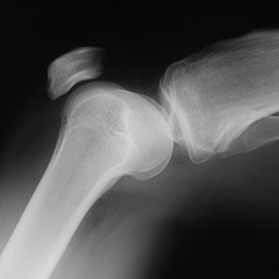- Community & News
- Conditions & Care
- Orthopedics
- Patient Stories
- Service Line
- Treatments
Do I Need Arthroscopic Knee Surgery?

If you’re experiencing knee pain that isn’t improving with time, loss of motion, swelling or redness in the knee, Joseph Thomas MD, an orthopedic surgeon at the TriHealth Orthopedic and Sports Institute, says to make an appointment with your doctor.
From there, your surgeon may recommend arthroscopic knee surgery.
Arthroscopic Knee Surgery: What is it?
"Arthroscopic knee surgery is a minimally invasive surgical procedure, which usually requires a general anesthetic, and is performed on an outpatient basis," Dr. Thomas explains.
During surgery, your surgeon makes very small incisions (usually two) – one to insert the camera and the other to insert small surgical tools.
Saline fluid is first pumped into your knee to stretch it. Next, a narrow tube, with a small camera is inserted into one incision, so your surgeon can view the inside of your knee from a large monitor, while inserting surgical tools into the other hole, and correcting the problem.
Once surgery is over, the solution will be drained, and the incisions will be closed with stiches.
When is Arthroscopic Knee Surgery Used?
Arthroscopic knee surgery is most commonly used to treat either a torn meniscus or chondromalacia [torn cartilage].
“The meniscus tear probably is the most common indication, and the reason it’s indicated is because in many people, the meniscus tears in an area that does not have good blood supply, and they don’t heal, so they continue to be symptomatic,” Dr. Thomas explains.
A meniscus tear in younger people is usually caused by a traumatic injury. However, in older people, tissue ages and becomes degenerative, which means something as simple as a quick twist can cause a tear.
Other reasons you may need arthroscopic knee surgery include:
- Torn or damaged anterior cruciate ligament (ACL) or posterior cruciate ligament (PCL)
- Swollen or damaged lining of the joint
- Kneecap that is out of position
- Small pieces of broken cartilage in the knee joint
- Removal of Baker’s cyst
- Fractures of the bones of the knee
Life After Arthroscopic Knee Surgery
While recovery depends on what type of problem was treated, in general, Dr. Thomas tells most patients to significantly cut back on their athletic activity for about four weeks.
He also stresses: “Most people will see a significant improvement in their pain, but they shouldn’t think they’re knee is going to return to perfect normalcy.”
Related Articles
- Conditions & Care
- Pediatrics
- Primary Care
- Service Line
- Treatments
- Conditions & Care
- Diabetes
- Disease & Symptom Information
- Patient Stories
- Service Line